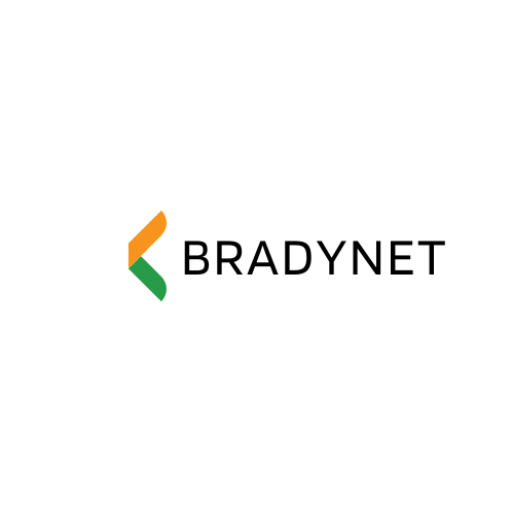
In this article, we look into the potential of integrating gold investments within your 401(k) plan.
We cover several avenues such as Gold Individual Retirement Accounts (IRAs), Gold Exchange-Traded Funds (ETFs), and Gold Mining Stocks, providing a comprehensive overview of each option.
Additionally, we evaluate the advantages and drawbacks of incorporating gold into your retirement savings, consider key factors when investing in gold through your 401(k), and offer strategic guidance to assist you in making well-informed investment decisions.
Join us as we explore the opportunities that gold investment can offer for your retirement planning.
Understanding the Possibility of Buying Gold with a 401(k)
Understanding the potential of buying gold with a 401(k) involves assessing the benefits and risks associated with this investment strategy. Gold can offer a hedge against inflation and economic uncertainties, making it a favorable option for long-term retirement planning.
One of the key advantages of including gold in a 401(k) is its ability to provide diversification in your retirement portfolio. By adding gold, investors can reduce the overall risk exposure to the stock market and other traditional assets. This precious metal has historically shown a negative correlation to equities, which can help mitigate losses during market downturns. Holding physical gold within a retirement account can serve as a store of value that is not influenced by the performance of traditional financial markets.
Options for Buying Gold with Your 401(k)
Bill Jackson, head of marketing at Teranga Gold Investments says, “When considering how to buy gold with your 401(k), there are several options available that cater to different investment preferences and risk appetites.” Choosing the right gold investment vehicle is crucial for optimizing your retirement savings.
- Gold Individual Retirement Accounts (IRAs) allow investors to hold physical gold within their retirement accounts, providing a tangible asset allocation.
- On the other hand, Gold Exchange-Traded Funds (ETFs) offer a more liquid and easily tradable option for those looking to invest in gold prices without owning physical metal.
- Gold Mutual Funds pool investors’ money to invest in various gold-related assets, offering diversification.
- Investing in Gold Mining Stocks provides exposure to the performance of gold mining companies, which can be influenced by production costs and industry trends.
Gold Individual Retirement Account (IRA)
A Gold Individual Retirement Account (IRA) allows investors to hold physical gold investments, such as gold coins, bars, or bullion, within a tax-advantaged retirement account. This option provides direct ownership of gold assets, offering a tangible store of wealth for retirement planning.
One of the key benefits of holding physical gold within a Gold IRA is the inherent value preservation it offers in times of economic uncertainty. Gold has historically served as a reliable hedge against inflation and market volatility, providing a sense of security to investors.
Investing in gold through a gold IRA can diversify your retirement portfolio, potentially reducing overall risk exposure. It’s essential to consider the tax implications of a Gold IRA, as gains from gold investments held within the IRA may be subject to different tax treatments compared to other assets.
Gold Exchange-Traded Funds (ETFs)
Gold Exchange-Traded Funds (ETFs) offer investors exposure to gold prices through stock exchange trading. This funding provides a convenient and liquid way to invest in gold without the need for physical ownership, making them suitable for retirement accounts in varying market conditions.
Investors can benefit from the flexibility of Gold ETFs, which can be bought and sold throughout the trading day at market prices. This real-time trading capability allows investors to react quickly to market changes and capitalize on price movements. Gold ETFs offer diversification benefits for retirement portfolios, as they provide exposure to the gold market without the need to directly manage physical assets.
Considerations for investing in Gold ETFs include expense ratios, tax implications, and tracking errors, which are important factors to evaluate when incorporating these funds into a 401(k) account.
Gold Mutual Funds
Gold Mutual Funds pool investors’ money to invest in various gold-related assets, offering diversification and professional management. These funds can provide exposure to gold mining companies and other gold-related securities, making them a viable option for retirement portfolios seeking gold exposure.
Investing in Gold Mutual Funds within a 401(k) plan can help investors capitalize on gold’s potential as a hedge against market volatility. By allocating a portion of retirement savings to gold mutual funds, investors can potentially benefit from income generation through dividends while spreading out risk across different assets. In times of economic uncertainty or inflation, gold has historically proven to be a store of value, making these funds a strategic addition to a well-rounded investment portfolio.
Gold Mining Stocks
Investing in Gold Mining Stocks allows investors to gain exposure to the gold mining industry and benefit from potential stock appreciation. These stocks can offer leverage to gold prices and dividends, providing an alternative way to invest in gold within a 401(k) account.
Gold mining stocks have the potential to outperform physical gold during certain market conditions, as they are influenced not only by the price of gold but also by company-specific factors. By including gold mining stocks in a retirement portfolio, investors can diversify their holdings and potentially enhance overall returns.
It’s important to note that investing in mining companies comes with risks such as operational challenges, geopolitical issues, and fluctuations in commodity prices, which can impact stock performance. A well-balanced retirement portfolio may benefit from the inclusion of gold mining stocks as part of a diversified investment strategy.
Pros and Cons of Including Gold in Your Retirement Portfolio
Adding gold to your retirement portfolio can offer diversification benefits and serve as a hedge against inflation and economic uncertainties. Gold investments also come with risks such as price volatility and storage costs that need to be carefully considered.
Including gold in a retirement portfolio can provide a level of security during times of market instability and currency devaluation. Gold’s intrinsic value often increases when other assets falter, making it a reliable store of wealth over the long term.
Along with acting as a portfolio diversifier, gold can offer protection against geopolitical risks and acts as a safe haven asset.
On the downside, the lack of income generation through dividends or interest payments can be a disadvantage of holding gold. Investors must keep in mind the ongoing costs of storage and insurance associated with physical gold investments.
Considerations for Investing in Gold with Your 401(k)
When contemplating gold investments within your 401(k), it is essential to consider factors such as your retirement goals, risk tolerance, and the advice of a financial advisor. Evaluating the suitability of gold for your investment strategy is crucial for achieving your long-term financial objectives.
Understanding the role of gold within a diversified investment portfolio and its correlation with market conditions is key. Gold can serve as a hedge against economic uncertainties and inflation, making it a valuable asset in times of market volatility.
Financial advisors can provide valuable insights into the various forms of gold investments available, such as physical gold, gold ETFs, or gold mining stocks, helping you make informed decisions based on your investment goals and risk profile. By staying informed about market trends and consulting with professionals, you can navigate the complexities of gold investments within your 401(k) effectively.
Reviewing the Benefits and Drawbacks
Reviewing the benefits and drawbacks of including gold in your retirement portfolio involves assessing the financial risks and rewards associated with gold investments. While gold can offer protection against economic downturns, it is essential to be aware of the potential market fluctuations and liquidity challenges linked to gold holdings.
When considering gold as part of your retirement strategy, it’s crucial to understand how asset allocation decisions can impact your overall savings. Diversifying your portfolio with gold can help spread risk, especially during times of economic uncertainty. The price volatility of gold compared to traditional assets like stocks and bonds should be carefully weighed. Factors such as geopolitical events and inflation rates can significantly influence the value of gold investments, affecting your retirement nest egg.
Maintaining Diversification of Assets
Maintaining a diverse range of assets in your retirement portfolio is essential for managing risk and optimizing returns. Gold can act as a diversifier within a portfolio, offering protection during market downturns and adding stability to your overall investment strategy.
One of the key benefits of incorporating gold into your retirement planning is its ability to hedge against inflation. Historically, gold has shown resilience during periods of economic uncertainty, making it a valuable asset for safeguarding the purchasing power of your savings. By including gold in a well-balanced portfolio alongside traditional investments like stocks and bonds, you can help mitigate volatility and improve the resilience of your overall wealth over the long term.
Evaluating Your Retirement Goals and Financial Needs
Evaluating your retirement goals and financial needs is crucial when considering gold investments for your retirement account. Understanding how gold aligns with your long-term objectives and risk tolerance can help you make informed decisions to secure your retirement savings.
By assessing your retirement goals, you can determine the level of risk you are comfortable with when investing in gold through a 401(k) plan. It’s essential to remember that gold is often seen as a hedge against inflation and market volatility, offering a level of diversification to your retirement portfolio.
Before adding gold to your investment mix, it’s wise to seek guidance from financial advisors who can help you evaluate how this precious metal fits into your broader retirement strategy.
Seeking Professional Advice for Decision Making
Seeking guidance from a qualified financial advisor is recommended when making decisions about gold investments within your 401(k). A professional advisor can provide personalized insights and recommendations tailored to your financial situation and retirement goals.
They can help you understand the role of gold in diversifying your retirement portfolio and mitigating risks. Professional advice can assist in determining the appropriate portion of your 401(k) to allocate towards gold investments, ensuring it aligns with your overall investment strategy.
With the expertise of a financial advisor, you can make informed decisions regarding the purchase, storage, and potential selling of gold in your retirement account. Their guidance can also help you stay updated on market trends and regulations, optimizing your retirement savings.
Summary of Strategies for Buying Gold with Your 401(k)
Incorporating gold into your 401(k) investment strategy can offer diversification benefits and hedge against market volatility. Whether through direct purchase of physical gold or investment in gold-related securities, gold can play a valuable role in safeguarding your retirement savings.
By including gold in your retirement portfolio, you can potentially reduce the overall risk exposure of your investments. Purchasing physical gold in the form of coins or bars allows for tangible ownership, providing a sense of security during economic uncertainties. Investing in gold exchange-traded funds (ETFs) or mining stocks offers a more liquid and convenient way to gain exposure to gold prices within your 401(k) account.
Keep a close eye on market conditions, as gold prices may be influenced by factors such as inflation, currency fluctuations, and geopolitical events, making it essential to regularly review and adjust your gold investment strategy.
